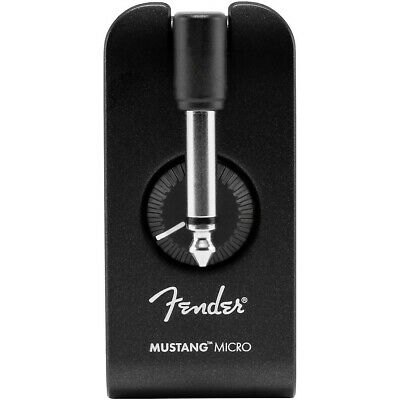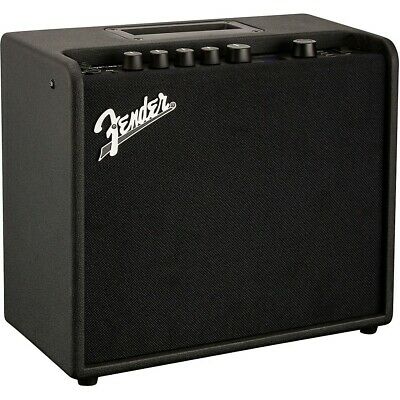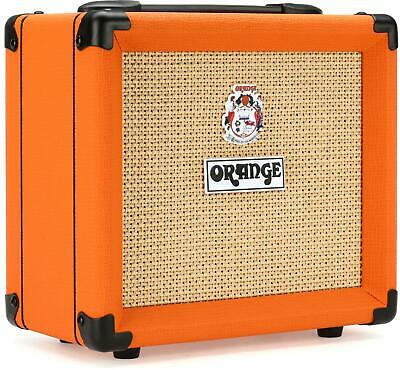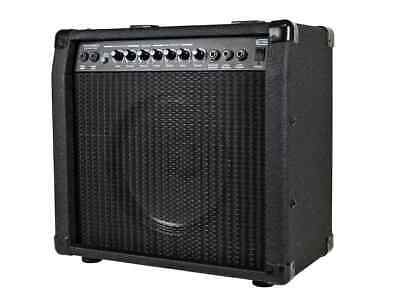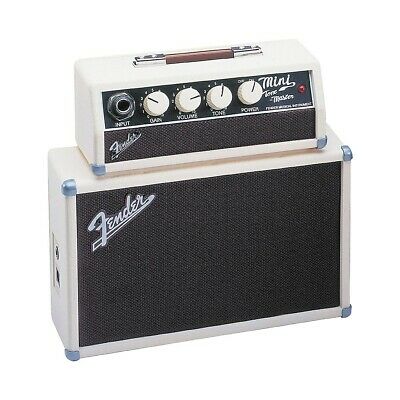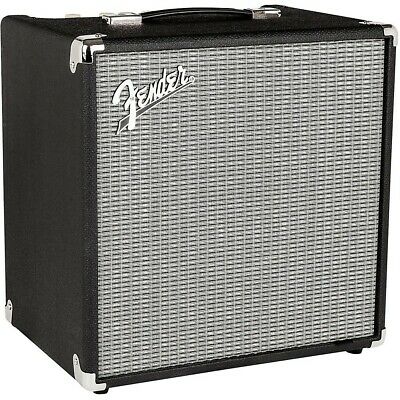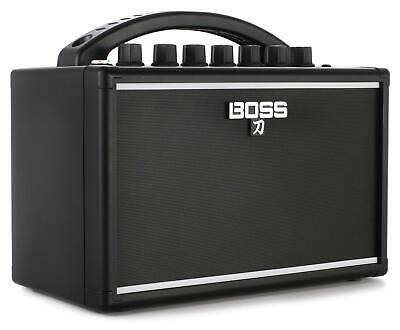-40%
Klipsch ProMedia 5.1 Capacitor KIT
$ 7.52
- Description
- Size Guide
Description
This is a custom-made kit for a ProMedia 5.1 owner who only wants to address the problem with hum. The other upgrades that I recommend (new BASH HC1011 non-ceramic boards, new daughter board, cooling fan, transistor and diodes)are not included in this economy kit. The capacitors are not "economy", though. They are top quality Panasonic low-ESR, FR type. In addition to the four capacitors for hum, six other capacitors that tend to degrade are also replaced. Those other capacitors can be responsible for hiss. The large 820 uF 200v and 1000 uF 100v and 63v capacitors are
not
included/ not replaced.
The 820 uF capacitors have proven to be very durable. They rarely measure below the design tolerance, even after years of use, and without any benefit of cooling. People see excessive adhesive used to mount them, and mistakenly think that adhesive is due to a capacitor leaking. The 1000 uF capacitors also rarely fail, but perhaps one in 40 repairs has a 1000 uF capacitor short-circuit. Less than 5% of these capacitors measure below their design tolerance.
Kit includes:
10 Panasonic FR electrolytic capacitors ranging from 22 to 100 uF.
Free shipping
Most people will be better served by the advanced cooling kit. That is for people with very good soldering skills, or to provide to a local shop for installation. As an alternative, a buyer can request at check out that I install the advanced kit as part of a repair, rather than ship the kit. With that option the panel would be shipped to me, and there would be a cost for labor (-) and possibly additional parts, if needed.
The components have been selected from seeing the causes of failure on over 1000 of these panels
. There can be causes beyond these boards and components, but these are where I start, based on their frequency of failure. Good soldering technique is required, because
if you make a mistake
and break a copper trace without realizing and fixing it, your panel will not work.
A good desoldering tool (e.g. Hakko FR-301) is strongly recommended to avoid damaging fragile copper traces and sockets for mounting the daughterboard. A simpler, basic cooling kit is available as a separate listing for about 0 less.
External threats to the ProMedia: If you have not looked into series mode power filtering/protection from SurgeX or ZeroSurge, I urge audiophiles to read up at either of their websites. I have excellently working SA-82 SurgeX filters available for 0, and new filters for 0 (price on Amazon has typically been 0 and up). I also have new replacement 3.5mm 10-ft trs input cables by Monoprice-- for a set of three.
The rest of the information below is what is found in my listing for the basic cooling kit:
Klipsch's Promedia 5.1 THX and Ultra computer speakers raised the bar for the audio power and quality people could expect from their computer.
With these no longer being produced, and the high end of the computer speaker market vacated, it becomes more important for audiophiles and gamers to keep their Promedia 5.1 systems alive.
If you are concerned about prolonging the life of your Klipsch Promedia 5.1 system (both THX and Ultra models), read on.
...
P
hotos
plus step-by-step
instructions
and a
tip sheet
will be
emailed
to the purchaser as well. As of 2020 Ebay no longer provides buyers' email addresses, so please send your email address.
I learned about the Klipsch’s reliability problem and how to defeat it while fixing an Ultra system for myself in October 2005.
You will need
:
1) Soldering iron and desoldering tool
2) Pliers, Philips screwdriver.
There is some misunderstanding on the web about cooling and the use of fans:
1. Why are fans needed? Upgrading parts alone is incomplete. You can replace parts that fail, but the heat generated is still there. Using an infrared thermometer, I've measured temperatures
before
fans are installed while playing only 2 speakers and the sub at moderate volume: one resistor that I upgrade measured 150 degrees within 10 minutes and 176 degrees after 20 minutes.
A second resistor I upgrade measured
before
the fans at 160 degrees within 10 minutes of powering on, and 197 degrees after 20 minutes. The table below shows how after the fans were installed, temperatures remained far cooler, around 90 and 100 degrees, respectively:
Power Supply Component Temperature Comparison
Degrees Fahrenheit BEFORE COOLING AFTER COOLING
After 10 Minutes
After 20 minutes
After 10 Minutes
After 20 Minutes
R7
150 degrees
176
105
105
R527
160
197
105
105
2. Does a fan inside a sealed enclosure do any good? The ideal is to have fresh, cool air, but if the acoustics of the sub make it impractical to bring in fresh air, all is not lost. Closed cooling systems are more commonly used with liquids (think of refrigerants circulating in air conditioners or coolant circulating in an auto’s cooling system), but a circulation of air inside an enclosure also effectively removes heat. The fan is sized and located to draw air past two small heatsinks plus a neighboring miniboard and components which often overheat. The heat without the fans is enough to burn your fingers after just 15 minutes, even if the system is not producing sound (handling only a fraction of its rated power). The airflow draws the heated air past a large heatsink that runs the full width of the panel and is thermally linked to the back panel. The large heat sink absorbs the heat from the circulating air, and shares it with the back panel. That back panel is designed by Klipsch and Indigo (the BASH maker) to radiate the internal heat of the system. It is normal for the panel to get warm during use, since it must radiate 10 watts (THX) to 25 watts (Ultra) of thermal energy at idle, and 60 watts or more while playing at volume.
The fan does not
reduce
how much heat the system produces, but it more
quickly and efficiently
gets the heat off the hot spots and onto the back panel for removal into the room.
Fans do not need fresh air for cooling. It would help, but a fan evens out the internal air inside the sub. Instead of vast areas staying cool, while small spots get very
hot
, now the entire internal air will be an evenly balanced warm.
3.
Does this cooling upgrade involve drilling holes in the sub? No. The electronics are inside a tuned speaker enclosure, and new holes would adversely affect the tuning (bass response).
4
.
Does the sub already provide enough air circulation by the movement of the subwoofer cones? In a word, no. The movement of the subs is synchronized so that both pull and push together. They do not pull air from one side of the sub to another, but pulse air in and out of the sub’s port. That oscillation at audible frequencies when channeled down into a narrow port is impressive and can be felt by holding your hand over the opening, but inside the entire sub and on the spread out surface of the components, the motion would be hard to detect. If the hot circuit spots could both somehow be relocated in the narrow path of the air as it is funneled through the tuned port, then there could be some cooling effect. There would still be no cooling, though, at idle (when subs are not thumping and displacing air).
I wish other people success with their repairs, but suggest removing heat is a vital part of the solution. There are even some expensive Japanese liquid cooling systems available for computers. Their price (over 0) and their ability to remove heat from only a single spot limit their application in the Klipsch Promedia 5.1 systems.
It is not a good idea to drill holes in a tuned speaker enclosure, and this system does not have any such holes. But there are a couple of very hot points inside the sub, which cook neighboring components and eventually char the circuit board to the point of shorting.
The air draws heat off the hot spots and moves it onto the back panel, which is designed to radiate the heat energy into the room. The fan evens out the internal temperature of the sub, and more efficiently removes that heat via the back panel.
Tip #1
: If your Klipsch ProMedia 5.1 system has lost just the satellites or just the sub, or these are intermittent, carefully inspect the white, the green and the orange-yellow connectors that link the boards together inside the sub via five-conductor ribbon cables.
The connector's pins can lose their spring (due to current and heat, most likely), and one or more contacts becomes open.
Tip #2:
If your Klipsch ProMedia 5.1 loses the sound after playing a short time, the problem may be the 2N5551 transistor on the power supply.
This kit and transistor is not a
guaranteed fix
.
The kit is designed to keep systems running, but
might
be able to solve a repair problem.
This problem has happened most often on the older, THX panels.
If spraying some component cooler on the transistor brings the sound back, that is good test to verify the problem is the 2N5551 transistor.
Tip #3:
If your system stops working,
but the power supply makes high frequency noises
, check the three small 22 microFarad and three 47 microFarad 50-volt capacitors on the power supply.
Over time, the heat from the power supply starts to dry them out, changing the frequency in the power supply. . This is just one of a couple dozen possible sources of failure.
Tip #4:
If even your control box does not light up, check the 5 amp slow-blow fuse where the power enters the panel.
If it has blown, check also the yellow or blue disk next to it for any signs of charring. That disk is a metal-oxide varistor, designed to sacrifice itself in case of a power line voltage spike.
You can buy a replacement MOV and fuse at Radio Shack, or a pair from me for .50.
Tip #5:
If your system does not power up, and there is no high frequency sound from the power supply powering up (but the control box still lights),
or
the power supply is only supplying 30 volts to the regulator board (instead of 55 volts enroute to the satellite amplifiers), then there is a chance that a tiny, 1/8 watt 205,000 ohm 1% tolerance precision resistor on the daughterboard to the right of the right side heat sink on the power supply has changed value. 1% means it must measure between 203k and 207k ohms. The resistor is immediately below the small black transistor at the upper left corner of the daughterboard on the power supply board.
Tip #6:
If your control box lights, but there is no voltage going to the amplifier boards and no high frequency sound from the power supply board, look if either of the two MOSFETs on the right power supply board have shorted. If they fail, there will also be damaged resistors, (e.g., 22-ohm and 392 ohm) that must be replaced at the same time.
Tip #7:
A few bridge rectifiers have failed at the entry point of the power supply board. While rare, this is an easy fix. I have rectifiers, if needed.
Tip #8:
If your panel produces a
hum
in the speakers, you can replace 4 electrolytic capacitors on the main panel (included with this expanded kit).
Tip #9:
This is harder to diagnose, but if you get 55V into the regulator board for the satellites and 85v in for the subwoofer channel, but the output voltage is 0 or far higher than a range of 7.2 -9.8 volts to the satellite amplifiers [0 or far higher than 10 - 11 volts to the
subwoofer
amplifier], then you may need a new BASH HC1011 board. There are two of these on the regulator board, one for the satellites, and one for the subwoofer amplifier.
(If there is charring and arcing on the daughterboard, the BASH boards may make noise and produce too high an output voltage, too, but the BASH boards will still be good). JBL/
Harman Kardon sells these for plus shipping. I am refurbishing some of these boards (new parts) as a alternative for use with repairs. I can list a BASH board on eBay, if requested, or can add one to a kit (new for ; refurbished for ).
Tip #10:
If you still have subwoofer but no satellite sound, check the voltage going to the five satellite amplifier boards. If it is
-.
47 volt, there may be a
zener diode
on the power supply that has failed. (It sits next to a hot heat sink, like transistor 2N5551 [Tip #2].
2N5551 produces similar symptoms but usually works for a few seconds when still cold.
REPAIRS
I am happy to help others get their Klipsch systems working and protected.
If you would like me to do a repair and install the full kit,
contact me for details
.
Very few panels are beyond repair.
Cost:
90% of panels can be repaired and upgraded with just using this kit. Labor for installation is $
60-
, and return shipping for a 12" cube box to the lower 48 states is typically $
15-
. Some panels have lots of charred adhesive that needs to be scraped away, and sometimes components need to be removed to access that adhesive.
The back panel removes with 12 screws, then the two subwoofer speaker wires at the upper right corner can be pried up and off with a flat-bladed screwdriver. A box at least 12 by 11 by 10 inches is needed to protect the panel when it's dropped during shipping
.
Some Q & A
From January-February 2012
Q: Hello again,
center channel is definitely distorted
. Another symptom is when the thing powers down there is a buzzing noise as it shuts off from the center channel. No evident scorching on the PCB that I could see. I also am in MN in the TC area, but this shouldnt be too difficult to fix with proper analysis from an o-scope, just gotta find what component is going bad. Most likely a diode, transistor or capacitor is the culprit. Let me know what you think!
A: I can think of three places to suspect, if you've ruled out the signal source and input cable: 1) manufacturing flaw: some adhesive dropped on a 1/8 watt resistor on the center channel amplifier board, causing the resistor to overheat and burn out. I've seen this on a few panels. The resistor is next to one of the potentiometers. I don't have my notes in front of me with its value. [6,000 ohms?] 2) One of two potentiometers to adjust bias current have changed value. They are very sensitive. Adhesive locks them in place. I use dental picks to reach them to measure their resistance, and to adjust these pots when bias current is too high. Current could be too low, though, too. You can measure each and see if one is far different from the settings of the others. 3) A preamp IC (TL074 or LM837) is failing. Usually, though, they short out. The zipping sound is common with the earlier THX (non-Ultra panels)--not necessarily a sign of trouble. Those would be where I've seen trouble in the past. I've got my plate full doing other repairs for people, so my time to guide you further will be quite limited.
Q: hi... I have a
static buzzing sound
that has gradually crept up. pretty constant intermittant at this point. I would like to send my whole sub in for repairs as I do not solder well... I live in MAUI HI though. zip is 96768. usps is usually cheapest. can you ship that way and let me know ballpark cost? thanks.
A: Hi, I agree that USPS is the best option. If you can remove the back panel from the sub, it will be much less expensive to ship, easier to pack, and you won't risk shipping damage to the enclosure. I can email details when I get home on how to remove the back panel. I have a good idea what is causing the hiss, and after replacing those diodes and cleaning up some charred material, the fan should prevent that from reoccuring. I know postal rates just went up, but I don't think they jumped. If the problem is as expected, ballpark cost to repair, replace 20 to 29 components that have aged from heat or tend to fail, installing a cooling fan and return shipping for the 7 pound panel to HI would likely be 2 to 5. If a ceramic BASH HC1011 board is also needed, that costs . I'll know when I have it on the bench. I'm booked for the next several weeks. Would a repair the middle of March work for you? You might be able to fit the panel in a large flat rate box if you unplug theh chain of red and black wires on the back, but that box leaves no room for padding. I can send further shipping and repair details if my price and timeframe are okay with you.
Q: Hi, I have a question. I have a set of Klipsch 5.1 Pro Media Ultra speakers I bought a while ago. Recently the satellites stopped working, all 5 of them. The
subwoofer still works but satellites don't
. On occasion they will start working after being turned off for a while but after about 5-7 mins they'll stop working again. They also gained a little bit of intermittent static which I think is connected because I haven't heard it before this problem started. After doing some research it looks like there is something warming up in the subwoofer. I took it apart but couldn't find anything specific broken. The control pod looks fine and I don't think it's the culprit. Any ideas what the issue might be and what the fix is? Would replacing the components you have in your kit fix it? Thanks.
A: Hi, I can't be sure which part will repair your system, because there are at least three that can cause the same symptoms. The easiest one is included with the kit, a 2N5551 transistor. If you have a can of component cooler (or use an inverted can of keyboard duster), you can try cooling it on the AC-DC converter board (bottom right board on the panel) when the satellites have stopped working. The transistor is next to the green plug at the left end. The transistor has 3 leads. If cooling it brings the system right back, you know it is the culprit. The 22v zener diode 1/2 inch to the right could be a second possible culprit. The third most common cause is that the ceramic BASH HC1011 board for the satellites is becoming intermittent. That is harder to replace, and is currently out of stock. I hope to get some of these repaired and available, but don't have them yet. The 22v zener diode can be easily added to the kit for $.50 as I recall. Watch out when the system is powered on. One of the aluminum heat sinks (on the right) is at a high voltage.
Q: The
subwoofer gives off a quiet muffle
when the volume is set very high. I don't think its a blown speaker because it works very well for a short period of time before it goes back to the muffle sound. The satellite speakers work well though. What do you think is the problem?
A: It is likely a problem with the ceramic board labeled "BASH HC1011" for the subwoofer section (there are two of these boards). They are a bit challenging to remove, since they mount with 15 pins to a circuit board with two large black heat sinks. They are also currently out of stock in the U.S. (since June), and the manufacturer (C-MAC) has been slow to respond to an order for 400 boards placed by Harman Kardon (which also uses those boards). I've ordered parts to try refurbishing those BASH boards, in case the new boards continue to be unavailable. There could be a different cause of the problem, but the BASH board is the most likely cause. Some people get temporary results by gently moving that board one way or the other.
Q: I have a lot of
120 mm and 140 mm fans
. Could I get the kit without the 92 mm fan ? I can install one of mine in the kit. Any savings in the price ? Thanks !
A: I'm fine deleting the fan, but I'd urge you first to take a look at the space available for a fan. I've chosen the largest fan I can fit. The hot section is the AC-DC converter board, particularly the daughterboard at the right side. You'll want the fan to move air down and past those components. There is not room to mount a 120mm fan directly over the AC-DC converter board and still get the panel to fit in the enclosure. Take a look at my listing of a complete AC-DC converter board with fan attached to see how the fan installs on the converter board and where you will want the air movement directed: item # 330674499482. If you still want to use your large fan and angle it to indirectly move air (not my recommendation), I can delete the fan. What is the current rating of your fan? I'm guessing it is designed for 12vdc. I normally use a 100 mA supply (my fan draws less than that), but can provide a higher current supply.
Q: Hello i got a dead power supply board im cause i have
no sound but the control pod still lights
and the numbers on the led changes but i have no sound from any of the speakers.Went 2 bed speakers working on very low volume woke up they were dead!! Do you think this kit will fix the the problem? If not any ideas?I can see some heat signs from a diode and resistor on the of the heat sink. Thx Gary
A: Hi Gary, You'll need to do some more work than what this kit covers. There could be several possible causes, but the most likely is that the daughter board for the AC-DC converter board charred between two 470 ohm resistors at the bottom. That charring caused electricity to leak, burning out a 22 ohm and/or 392 ohm 1/8 watt resistor above them, and burning out an IRF740 MOSFET on the heatsink next to the daughterboard. I have all those parts, but it is not a repair for beginners. I recently sold a refurbished AC-DC converter board with the cooling fan installed for . If that board has failed as is likely, that would be the simplest step, and the fan and about 20 to 25 upgraded parts I install would keep it working much longer. I'd offer a refund if you ship the non-working AC-DC converter board (has a yellow transformer in the middle) back. If I weren't so busy, I'd recommend you shipping your entire panel for repair. If you are a knowledgeable electronics hobbyist, I can provide the parts you need to do the work yourself. (If one of the two IRF740 MOSFETs has a short between any two of their three terminals, you can be certain this is the problem). It is easy to make mistakes, though, with the amount of work being done.
Q: Thanks for offering cooling upgrades for PM 5.1's. I have a regular PM 5.1 set that stopped fully working a couple years ago. The problem was that they'd
randomly drop sound and have a high frequency
hum come from the satellites. I just turned them on again and they started with the hum, but it went away after a few minutes. When I tried the sound it worked at that point. These were repaired by Klipsch once. I'm wondering if you have experience with this particular issue and what it could be. I'm willing to open the sub and see if there's something wrong, but it'd be helpful to have someone's opinion. If they're still working and not really gone then I want to buy your kit! These are the best PC speakers out there (I replaced them with the 0 Logitechs, life has never been the same).
A: Hi, If you are comfortable soldering and have a thin soldering pencil (not a gun), I can include a set of 4 capacitors to replace to eliminate that hum. The hum will get worse with time, otherwise. I think my listing mentions a price around for them. Have me send a revised invoice before you pay, if interested. There are 3 possible causes of the satellite speakers randomly dropping out. The most common is addressed with the transistor that I include as one of the four components with the kit. For $.50 I can include a zener diode, which sometimes causes that problem. The third possibility would be that a BASH HC1011 ceramic board is failing. That is considerably harder to remove, and costs when available (more have been ordered by Harman Kardon to be manufactured, but the maker is not responsive). I hope to be able to offer refurbished BASH boards soon, but do not have the parts yet to attempt that. I'm pretty busy with repairs, so if you can do a replacement of parts yourself, that will be good for both of us. But if you are not good at soldering, you'll be ahead sending the system to me (I'd replace 20 to 29 parts as part of the repair, plus do the kit installation) or having an experienced person do the soldering.
Q: I have a failed
ProMedia 2.1 system
. What would you charge to repair this system? Also,
do you have any ProMedia 5.1 amps available
? I have a 5.1 Ultra system that failed and I sent off the amp for repair, but never got it back.
A: Hi, Sorry to hear about the missing 5.1 amplifier. I just sold a refurbished 2.1 amplifier Thursday for . I don't know if your system needs a repaired control pod plug, repaired amplifier, or something else. So I can't know for sure what the cost would be, but could give you an estimate. I'm quite busy with 5.1 repairs for the next several weeks, though. I could get a 5.1 Ultra panel ready (with upgraded parts and cooling) for you soon. I just sold one a couple of days ago (not on eBay). Mine have been selling for 2 shipped to the lower 48 states, with a core return refund available (I provide a Fed Ex Ground shipping label for the old panel), or if you pay the return shipping for the core. Let me know if I can be of further help with your systems.
Q: I HAVE READ SOME FORUMS AND REMOVED THAT
DAUGHTER BOARD THERE IS SOME CHARRING
YOU CAN SEE THE DAMAGE. COULD YOU ESTIMATE THE 29 PARTS AND LABOR IF YOU DO REPAIRS FOR ME. AC DC DAUGHTER BOARD IS OUT FROM UNIT I COULD SHIP IT TO YOU. I JUST
NEED TO KNOW PRICE
AS CLOSE AS POSSABLE I CAN SEND A PICTURE OF IT IF YOU LIKE BUT ON THE FORUMS ITS THE SAME PICTURE/COMMON PROBLEM I GUESS. THANKS ROSS
A: Hi Ross, If the charring is between the two 470 ohm resistors, and has indeed caused the problem with your panel (sometimes people jump to conclusions in their diagnosis), there will also be a shorted, burned out IRF740 MOSFET (or two) next to the daughterboard. If the problem is only with the daughterboard (and the two nearby IRF740 MOSFETs, which will need to be replaced, too), cost for replacing 31 components, installing the fan and its power supply and return shipping for the 7 pound panel to the lower 48 states would be about 0 (depending partly on how much damage happened to the daughterboard, and that it is still salvageable. Nearly all daughterboards can be cleaned and reused). The components I replace would also avoid the problems with hum. Very rarely a panel also has a defective ceramic BASH HC1011 board, which would be separate. I'm slowing my pace of repairs this year, so I'd be looking at doing a repair toward the end of February, unless I have some cancellations or get ahead of my schedule. The daughterboard has 15 of the approximately 30 components that I replace. Ten to twelve others are on the rest of the AC-DC converter board. The hum capacitors are on the main board.
Q: How much would it cost for a new Promedia 5.1 THX (not ultra)
daughterboard ship to Canada
? If I need to send in my amp, what is your address and contact info? Cost of repair? Thanks.
A: Hi, I could ship a new, tested daughterboard for . If your daughterboard has burned out resistor(s), you will also need at least one (I'd recommend replacing them as a pair) IRF740 MOSFET. I could add a pair of those power transistors for . I have some used IRF740s, and could send two used ones for free, if you wish. Cost for repair, upgrading 20 to 29 components, installing the fan and its power supply, and return shipping to Canada for the 7 pound panel would be 2 to 2 for 95% of repairs. I'm slowing down my pace of repairs in 2012, and filled up a month of slots just last week. If doing a repair the second half of February would work for you at the price range I noted, please let me know, and I'll pencil you in and send you further details for shipping your panel.
Q:
Does the
Promedia 2.1 amp have the same issues
as the 5.1 amp?
A: No, not the same issues. The designs are quite different between the 2.1 and the 5.1. No fan is needed for the 2.1, but on all but the most recent versions of 2.1 ProMedia, a couple of resistors tend to overheat (need to be upgraded and mounted above the circuit board), and the control pod's plug is weak (easily damaged, so a stronger plug is suggested).
Q: Do you do any other repairs to the Klipsch ProMedia Ultra 5.1 system? Mine has been
hissing
for the last few weeks now when in speaker mode. It'll be quiet for a few minutes and then slowly get louder and then sometimes go away again or just say. It does it with the computer either on or off. It immediately stops when I hit the button to switch to headphone mode. I took the back panel off the sub where the amp is and didn't see any popped capacitors and the fuse was still good. I've tried different outlets and surge protectors as well and still the same issue. It's either in the amp somewhere or in the control box. If you do know of any fixes, please let me know, or if you do repairs, please let me know
A: Hi, Yes, I do repair these. The hiss is a problem typically based in the panel's AC-DC converter board. It is caused when heat either has caused charring, deterioration of some zener diodes on a daughter board, or drying out of 22uF capacitors. If you are very skilled with soldering and have good desoldering equipment, I can provide parts. Otherwise it may be better to have me to the repair and upgrades (likely 29 components replaced, plus installation of a fan).
Q:
My Promedia 5.1 satellite speakers work for about 2 min. before they quit. Will the 2N5551 with your kit fix this? How many hours to install your kit? Thanks
Apr-29-09
A:
I'd say you have a high likelihood of success with that transistor. You can be sure if you want to take a can of duster (used for cleaning computer keyboards), hold it upside down and with the panel sitting outside the sub enclosure (12 screws around the panel's outside edge remove, and two subwoofer speaker wires in the upper right corner can be pried up) and powered up with the speakers and an input still attached, wait until the system acts up (it may take longer outside the enclosure, since it will be cooler in open air). When the sound quits, spray a few drops of the liquid through the duster's extension tube so that it drops onto the small black resistor at the left side of the power supply. It is a half inch to the right of the green plug that connects the power supply to the main board. If the system immediately starts playing, then dies again after warming up, you will be able to quickly verify that the transistor is temperature sensitive. If you can do this and get a result, let me know. The kit should take about an hour, but I've done so many of these, I should probably double that duration for doing it the first time. If needed, when I get home I can email a photo of that transistor on the board; I'll need your email address, though.




